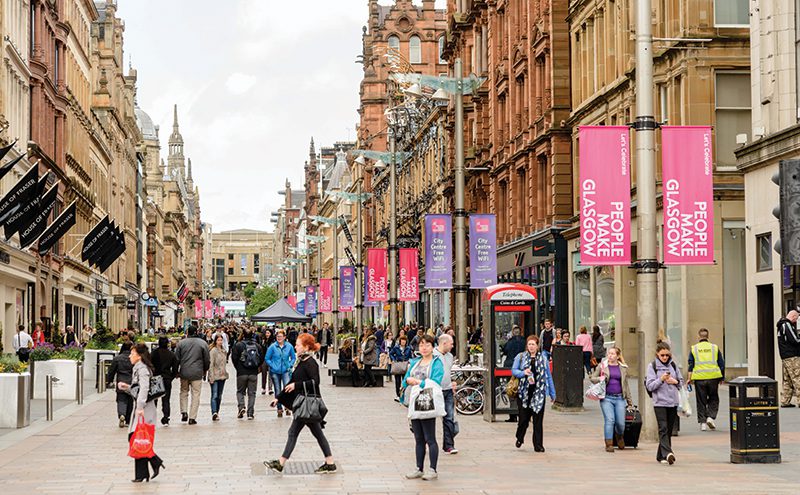Property firm’s report highlights Scotland’s changing retail landscape

‘That decline largely came to an end over the last year, as cafes, convenience stores and new brands filled the gap.’
John Duffy, director in-town retail, Colliers International
LAST year saw signs of recovery in some of Scotland’s town centres, with convenience stores playing a part in the revival. But smaller towns are lagging well behind the big cities, planning policies could do more to encourage mixed commercial and residential regeneration of high streets, and fundamental rates review is key to the future prosperity of the country’s secondary centres.
Those were some of the messages in commercial property specialist Colliers International’s latest Midsummer Retail Report. The report also highlighted substantial variation in the movement of rental values across the wider retail industry in major city centres and sounded notes of caution on the retail industry’s prospects in the face of poor Scottish economic growth and consumer and business uncertainty following the Brexit vote.
At the official launch of the report the firm’s director in-town retail in Scotland John Duffy said: “Smaller high streets have stagnated in recent years, and some have moved backwards as retailers leave for larger, out-of-town destinations.
“That decline largely came to an end over the last year, as cafes, convenience stores and new brands filled the gap.
“We may now start to see a return to modest rental growth.”
But if rental value reflects the attractiveness of given districts last year’s movements showed that the gap between the big shopping destinations and market towns grew again, even if no town experienced a drop of more than £5 per square foot for prime retail space. The worst performers, according to the Collier report, were those “caught in the gravitational pull of Glasgow and its big shopping centres”. Of nine centres with deteriorating rents five (Ayr, Cumbernauld, Greenock, Hamilton and Irvine) were relatively close to Glasgow, where city centre rents being paid by the likes of major fashion stores jumped by 8%.

While Glasgow city centre rents rose and Perth rents jumped by even more (10%) Edinburgh city centre rents grew by only 3% and Dundee was in a special position because of the massive development of its waterfront, which is likely to encourage uptake of city centre sites – but perhaps mostly by leisure and hospitality businesses.
While smaller towns struggled against the cities there are signs that big city development in years to come might be relatively modest and that could present opportunities for smaller districts, if planning regimes can better fit retail and residential provision to local demand, the Midsummer Retail Report suggests.
Anthony Aitken, head of planning with Colliers International, said: “We are in a period of consolidation and extension for the big established centres, and they are unlikely to be challenged, as it is hard for smaller destinations to compete. Instead, mixed retail and residential developments will allow growing towns to meet the need for local shopping.
“This also provides a way forward for towns, which find they have too much retail space. Although many planning authorities remain reluctant to give up any retail space, some sites may be more suited to a mix of residential and community uses.”
The Colliers International report was issued before Ken Barclay, who is leading the Scottish Government’s review of business rates, announced the remaining members of his group and called for businesses to submit their ideas to reform the current system.
Peter Muir, head of rating with Colliers international in Scotland, had stressed the need for change and said: “Businesses have endured two extra years of pain on rates calculated before the recession and they are looking forward to a reduction in their payments.”




















